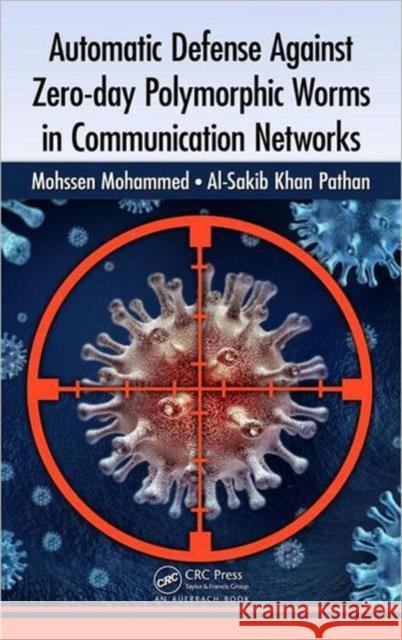Automatic Defense Against Zero-Day Polymorphic Worms in Communication Networks » książka
Automatic Defense Against Zero-Day Polymorphic Worms in Communication Networks
ISBN-13: 9781466557277 / Angielski / Twarda / 2013 / 338 str.
Automatic Defense Against Zero-Day Polymorphic Worms in Communication Networks
ISBN-13: 9781466557277 / Angielski / Twarda / 2013 / 338 str.
(netto: 408,76 VAT: 5%)
Najniższa cena z 30 dni: 424,81
ok. 22 dni roboczych
Dostawa w 2026 r.
Darmowa dostawa!
Able to propagate quickly and change their payload with each infection, polymorphic worms have been able to evade even the most advanced intrusion detection systems (IDS). And, because zero-day worms require only seconds to launch flooding attacks on your servers, using traditional methods such as manually creating and storing signatures to defend against these threats is just too slow.
Bringing together critical knowledge and research on the subject, Automatic Defense Against Zero-day Polymorphic Worms in Communication Networks details a new approach for generating automated signatures for unknown polymorphic worms. It presents experimental results on a new method for polymorphic worm detection and examines experimental implementation of signature-generation algorithms and double-honeynet systems.
If you need some background, the book includes an overview of the fundamental terms and concepts in network security, including the various security models. Clearing up the misconceptions about the value of honeypots, it explains how they can be useful in securing your networks, and identifies open-source tools you can use to create your own honeypot. There s also a chapter with references to helpful reading resources on automated signature generation systems.
The authors describe cutting-edge attack detection approaches and detail new algorithms to help you generate your own automated signatures for polymorphic worms. Explaining how to test the quality of your generated signatures, the text will help you develop the understanding required to effectively protect your communication networks. Coverage includes intrusion detection and prevention systems (IDPS), zero-day polymorphic worm collection methods, double-honeynet system configurations, and the implementation of double-honeynet architectures."











